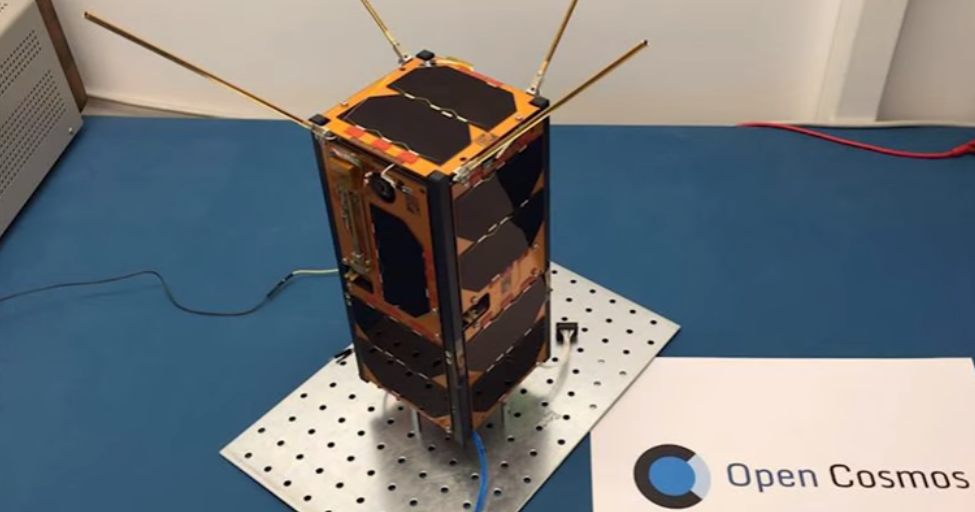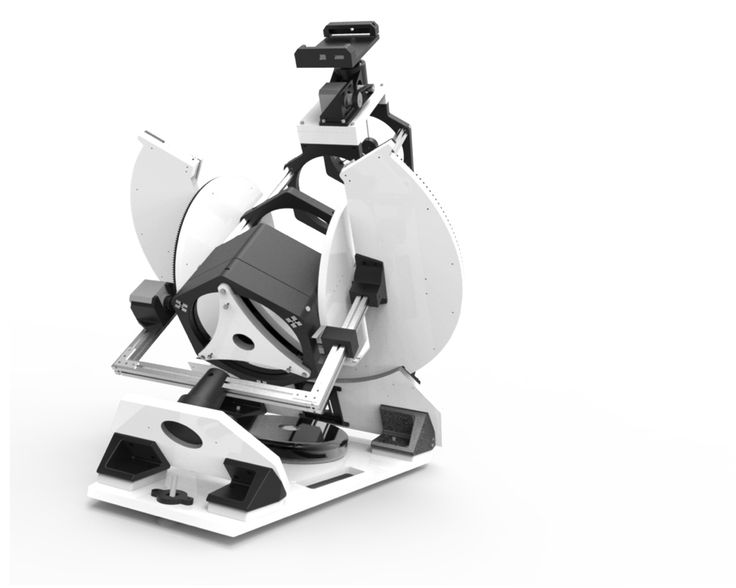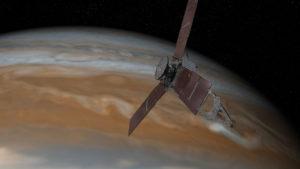Check Out These Four Space-Themed 3D Printing Projects Inspired by NASA’s Juno Spacecraft from Wevolver
On July 4th the Juno spacecraft that was launched by NASA back in 2011 successfully settled into orbit around Jupiter where it is preparing to help us understand the origin and evolution of the the fifth, and largest, planet in our solar system. It was helped along the way thanks to 8 titanium waveguide brackets that were 3D printed by Lockheed Martin. This is the first spacecraft with 3D printed components to venture so far into space, and those waveguides will transmit radio frequency signals between the various spacecraft components, helping Juno fulfill its mission for years to come. In honor of this milestone, open source maker community and education platform Wevolver assembled some great 3D printing projects to help you explore space from your home.
PiKon: The 3D Printed Raspberry Pi Powered Astronomy Camera by Mark Wringley
![]() While there have been build your own telescope kits available for years, there aren’t very many kits that let users build their own Astro camera. But the PiKon project is a Raspberry Pi-powered telescope and camera that can be built with some easy to source electronics and using 3D printed parts. The project was designed to be a relatively simple build, and is sturdy and robust enough for years of use with proper care of the camera sensor and mirrors. The camera on the Raspberry Pi captures the images from the telescope, and they can be transferred to a computer using a micro-SD card, or over the internet with a WiFi module. The telescope camera was also designed included a standard mounting thread so it can be used with any camera tripod. The camera will capture 5-megapixel images, and according to the creator it will cost about £100 (post-Brexit that’s about $130) to build.
While there have been build your own telescope kits available for years, there aren’t very many kits that let users build their own Astro camera. But the PiKon project is a Raspberry Pi-powered telescope and camera that can be built with some easy to source electronics and using 3D printed parts. The project was designed to be a relatively simple build, and is sturdy and robust enough for years of use with proper care of the camera sensor and mirrors. The camera on the Raspberry Pi captures the images from the telescope, and they can be transferred to a computer using a micro-SD card, or over the internet with a WiFi module. The telescope camera was also designed included a standard mounting thread so it can be used with any camera tripod. The camera will capture 5-megapixel images, and according to the creator it will cost about £100 (post-Brexit that’s about $130) to build.
M.A.R.S. (MADspace Advanced Robotics System) Rover by Eindhoven MADspace
The M.A.R.S. rover is a simplified version of NASA’s Curiosity space exploration vehicle that is currently roaming the surface of the red planet. The project was created by Guus van der Sluijs and a team of makers from Eindhoven Hackerspace in the Netherlands as a way to allow anyone to explore the surface of any planet that you can land a rover on. Just as with Curiosity, the M.A.R.S. rover uses the same type of suspension system that allows it to travel over even the most uneven of ground. The six-wheeled rover has a body and frame made from 3D printable components and is powered by a Raspberry Pi. It also includes a gyroscope so it can keep track of where it is and where it has been and webcams so it can record its progress and transmit them back to the builder.
Here is a video to help you get your project started:
QBCAN Nano-Satellite by Open Cosmos
 Open Cosmos is a London-based startup that has developed an affordable nano-satellite design that can give anyone from colleges, research institutions or space agencies in developing nations access to space. Their educational “CanSat” kit was developed specifically for primary, secondary and tertiary education, and the smaller version of the nano-satellite is intended to inspire and engage future generations of space explorers. All students need to build their CanSat is a 3D printer to make the satellite casing, an Arduino Pro Micro and the internal electronics.
Open Cosmos is a London-based startup that has developed an affordable nano-satellite design that can give anyone from colleges, research institutions or space agencies in developing nations access to space. Their educational “CanSat” kit was developed specifically for primary, secondary and tertiary education, and the smaller version of the nano-satellite is intended to inspire and engage future generations of space explorers. All students need to build their CanSat is a 3D printer to make the satellite casing, an Arduino Pro Micro and the internal electronics.
Here is some video of Rafel Jorda from Open Cosmos explaining how QBCAN works:
Project Ultrascope by Open Space Agency
 When we wrote about the Ultrascope Project back in 2014 the Open Space Agency was only starting to develop the project and it had just entered the beta testing phase. The open source robot telescope, or ARO (Automated Robotic Observatory), was being created to reduce the cost required for average citizens to help contribute to the study of space. It allows amature astronomers to perform lightcurve photometry, a process that generates useful data for a variety of scientific applications like planet finding and asteroid hunting. The build files and open source design was made available on Wevolver last January, but because the project is ongoing there are always going to be new things to discover. For about $300 in supplies and the use of a 3D printer, any amateur scientists can build their own smartphone controlled ARO and help NASA’s NEO hunting mission.
When we wrote about the Ultrascope Project back in 2014 the Open Space Agency was only starting to develop the project and it had just entered the beta testing phase. The open source robot telescope, or ARO (Automated Robotic Observatory), was being created to reduce the cost required for average citizens to help contribute to the study of space. It allows amature astronomers to perform lightcurve photometry, a process that generates useful data for a variety of scientific applications like planet finding and asteroid hunting. The build files and open source design was made available on Wevolver last January, but because the project is ongoing there are always going to be new things to discover. For about $300 in supplies and the use of a 3D printer, any amateur scientists can build their own smartphone controlled ARO and help NASA’s NEO hunting mission.
Here is a video about the development of the Ultrascope presented by Open Space Agency founder James Parr:
All four of these great 3D printing and electronics projects are available for download from Wevolver, including instructions, all the STL files and any coding or electronics diagrams needed to complete the project. Because Wevolver is a cooperative community, there are also comments on projects that can help clarify any difficult spots, or offer tips and tricks. The Wevolver platform is a great way to find new projects for fun or to use in an educational setting and include projects for every skill level, including projects as simple as homemade beehives to as complex and involved as a full-sized robot. You can learn more about Wevolver and all of their maker projects here. Discuss further in the 3D Printed Space-Themed Projects forum over at 3DPB.com.
Subscribe to Our Email Newsletter
Stay up-to-date on all the latest news from the 3D printing industry and receive information and offers from third party vendors.
Print Services
Upload your 3D Models and get them printed quickly and efficiently.
You May Also Like
Havaianas Collaborates with Zellerfeld to Launch 3D Printed Flip-Flops
The shoe of the summer is undoubtedly the flip-flop. Easy on, easy off, your feet won’t get sweaty because there’s not much material, and they’re available in a veritable rainbow...
UCLA Researchers Develop 3D Printed Pen that May Help Detect Parkinson’s Disease
Diagnosing Parkinson’s disease is difficult. Often, early symptoms of the progressive neurological condition may be overlooked, or mistaken for signs of aging. Early diagnosis can help save lives and improve...
Printing Money Episode 30: Q1 2025 Public 3D Printing Earnings Review with Troy Jensen, Cantor Fitzgerald
Printing Money is back with Episode 30, and it’s that quarterly time, so we are happy and thankful to welcome back Troy Jensen (Managing Director, Cantor Fitzgerald) to review the...
Heating Up: 3D Systems’ Scott Green Discusses 3D Printing’s Potential in the Data Center Industry
The relentless rise of NVIDIA, the steadily increasing pledges of major private and public investments in national infrastructure projects around the world, and the general cultural obsession with AI have...


































